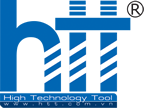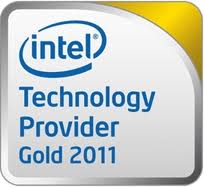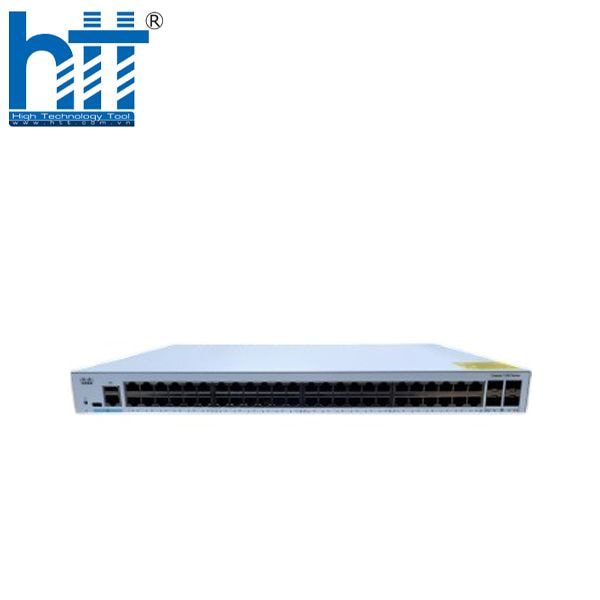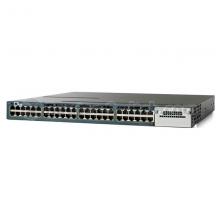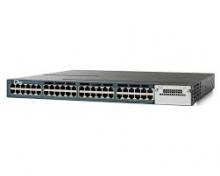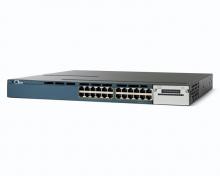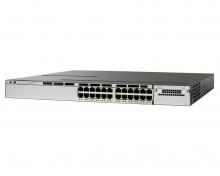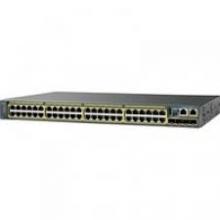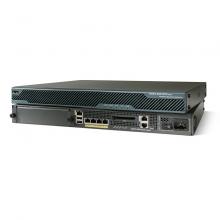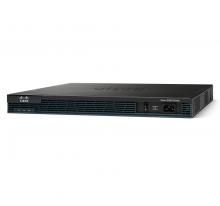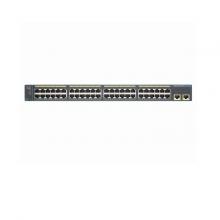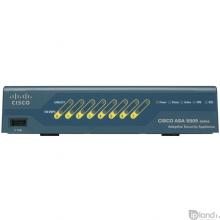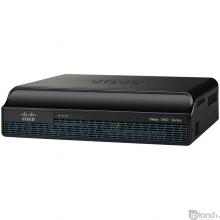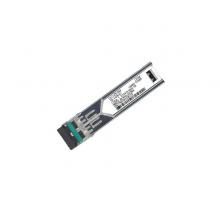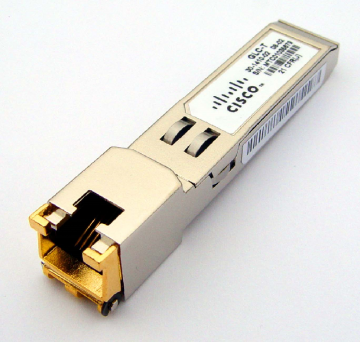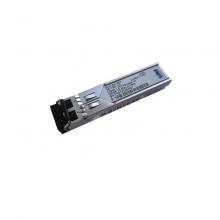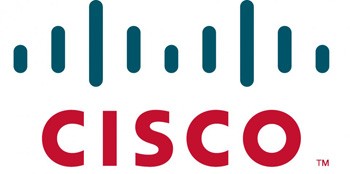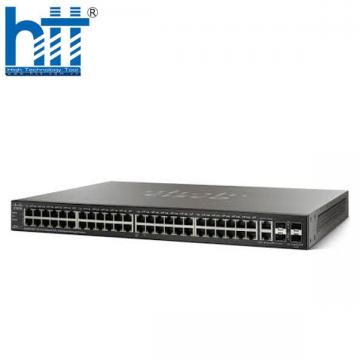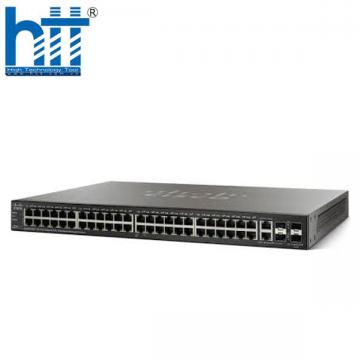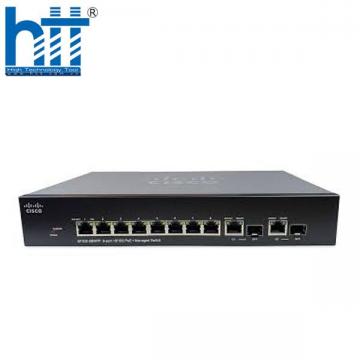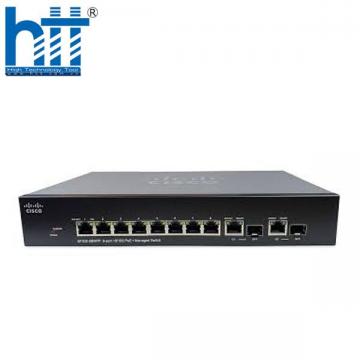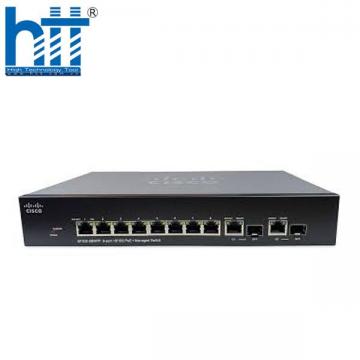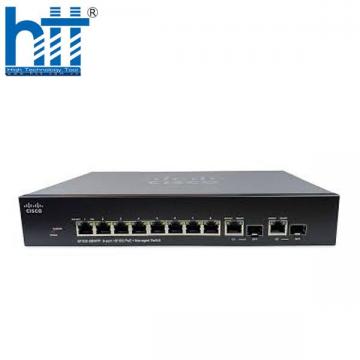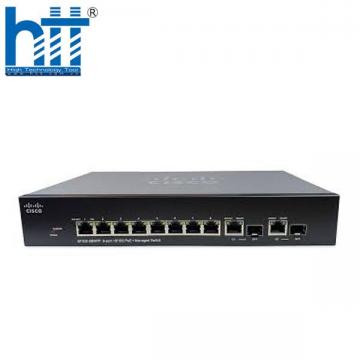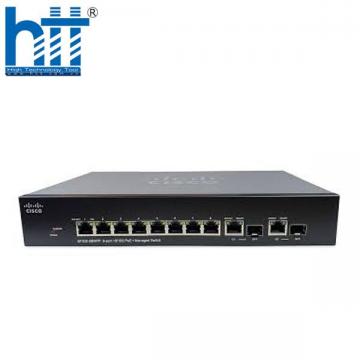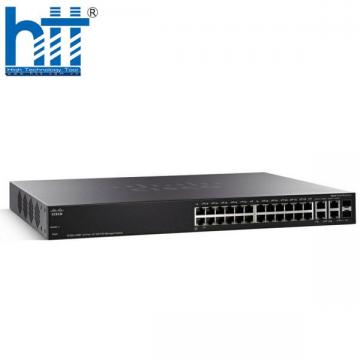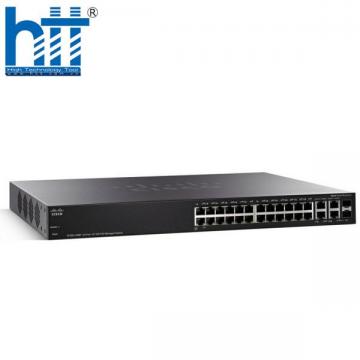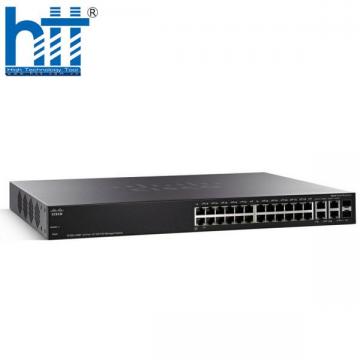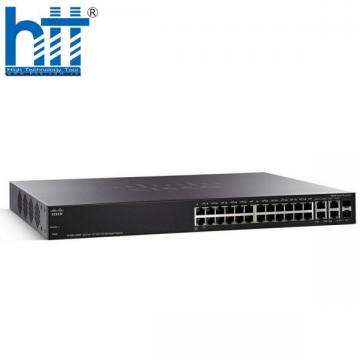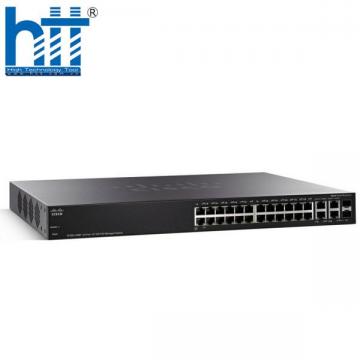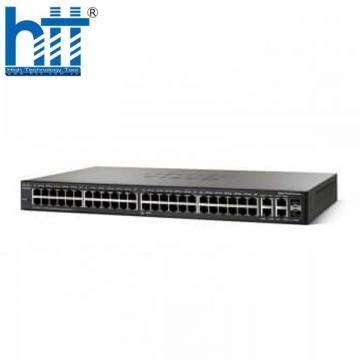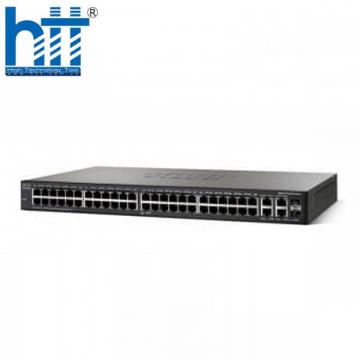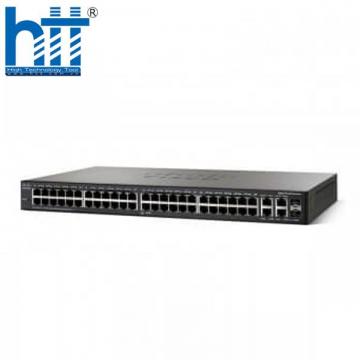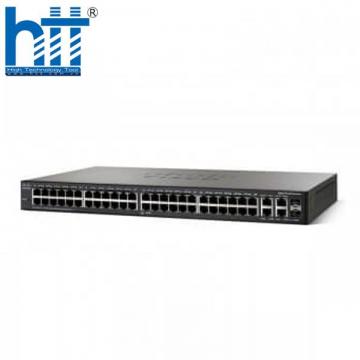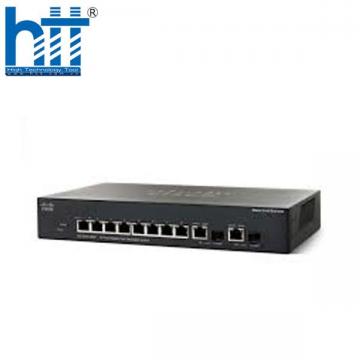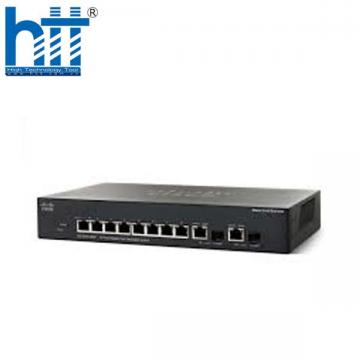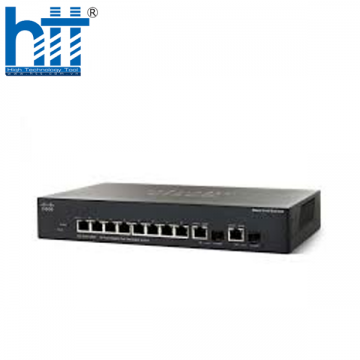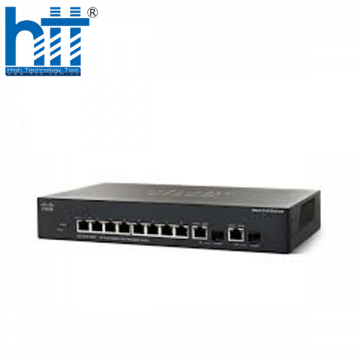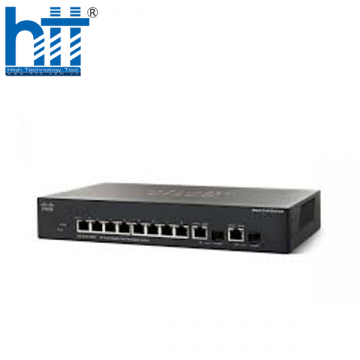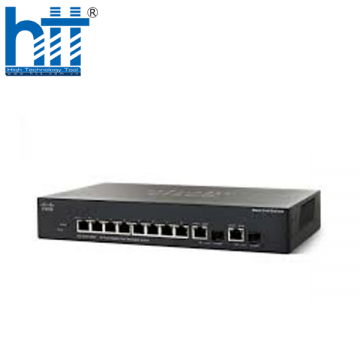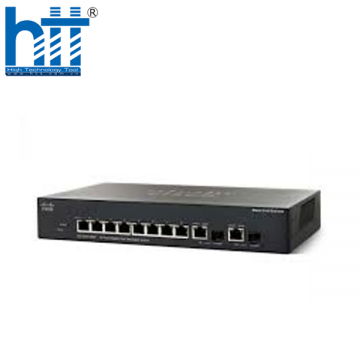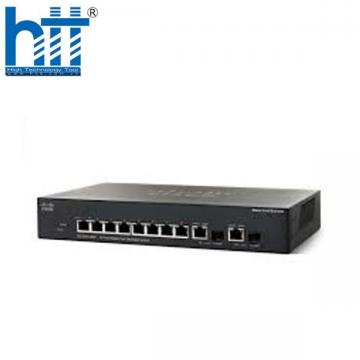|
Bạn đang xây dựng hệ thống mạng cho văn phòng hoặc tổ chức và cần một thiết bị chuyển mạch có hiệu suất cao, hỗ trợ đầy đủ các tính năng quản lý, bảo mật, chia VLAN và định tuyến? Bạn cần một thiết bị nhiều cổng, dễ triển khai và vận hành? Switch Cisco C1200-48T-4G là lựa chọn hoàn hảo cho mô hình mạng hiện đại của doanh nghiệp vừa và nhỏ. Hãy cùng Hợp Thành Thịnh khám phá chi tiết dòng thiết bị này ngay sau đây!
1. Giới thiệu tổng quan Switch Cisco C1200-48T-4G
Switch Cisco C1200-48T-4G là dòng thiết bị chuyển mạch mới thuộc dòng Catalyst 1200 Series của Cisco, nổi bật với 48 cổng RJ45 10/100/1000 Mbps và 4 cổng uplink quang SFP. Thiết bị hỗ trợ cả Layer 2 và Layer 3, mang đến sự linh hoạt và hiệu quả trong việc xây dựng hệ thống mạng cấp doanh nghiệp. Với Switching capacity lên đến 104 Gbps và tốc độ chuyển tiếp 77.38 Mpps, switch này đảm bảo truyền tải dữ liệu mượt mà, phù hợp với môi trường văn phòng nhiều thiết bị.
Switch được trang bị cổng điều khiển RJ45 và USB-C, hỗ trợ quản trị qua nhiều phương thức như CLI, Web GUI, SSH, Telnet, quản lý từ xa bằng App Mobile và Cloud thông qua Cisco Business Dashboard – rất tiện lợi và dễ triển khai.
2. Những điểm nổi bật của Cisco C1200-48T-4G
2.1. Mật độ cổng cao – Kết nối mạnh mẽ
Với 48 cổng Gigabit RJ45, switch dễ dàng đáp ứng yêu cầu kết nối của hàng chục thiết bị như máy tính, điện thoại IP, máy in, camera, Wi-Fi… trong cùng hệ thống mạng nội bộ. 4 cổng SFP uplink bổ sung khả năng kết nối quang tốc độ cao đến các tầng mạng khác hoặc thiết bị lõi, mở rộng linh hoạt trong văn phòng hoặc tòa nhà nhiều tầng.
2.2. Hiệu suất chuyển mạch mạnh mẽ
Hiệu suất là yếu tố cốt lõi của switch mạng. Cisco C1200-48T-4G được trang bị băng thông switching 104 Gbps và tốc độ forwarding 77.38 triệu gói tin mỗi giây (Mpps), cho phép thiết bị xử lý khối lượng dữ liệu lớn mà không xảy ra nghẽn mạng hay giảm tốc.
2.3. Quản trị đơn giản, linh hoạt
Quản trị hệ thống mạng trở nên đơn giản hơn bao giờ hết với Cisco Business Dashboard, giúp cấu hình và giám sát thiết bị dễ dàng trên giao diện đồ họa Web GUI hoặc từ xa qua App Mobile. Ngoài ra, người dùng chuyên nghiệp cũng có thể quản lý bằng CLI, SSH, Telnet để tùy chỉnh chuyên sâu.
3. Tính năng nổi bật của Switch Cisco C1200-48T-4G
3.1. Hỗ trợ Layer 3 Static Routing
Tính năng định tuyến tĩnh giúp phân chia hệ thống mạng thành nhiều nhóm nhỏ (subnet hoặc VLAN) và định tuyến nội bộ mà không cần đến thiết bị router riêng biệt. Điều này vừa tiết kiệm chi phí, vừa tăng hiệu quả hoạt động mạng, đặc biệt trong các môi trường văn phòng có nhiều phòng ban, khu vực.
3.2. Hỗ trợ VLAN và QoS toàn diện
Thiết bị hỗ trợ đầy đủ các chức năng VLAN, bao gồm VLAN 802.1Q, VLAN management, Voice VLAN…, giúp cô lập và kiểm soát lưu lượng giữa các nhóm thiết bị trong mạng. Đồng thời, QoS (Quality of Service) cho phép ưu tiên các gói tin quan trọng như dữ liệu thoại, video, giúp các ứng dụng thời gian thực luôn ổn định.
3.3. Tính năng bảo mật nâng cao
Switch được tích hợp các cơ chế bảo mật mạnh mẽ:
- IEEE 802.1X: kiểm soát truy cập cổng mạng theo người dùng.
- Access Control Lists (ACLs): giới hạn truy cập dựa trên địa chỉ IP, MAC, port.
- Chống tấn công DoS: bảo vệ hệ thống trước các cuộc tấn công từ chối dịch vụ.
Tất cả đảm bảo hệ thống mạng được bảo vệ toàn diện khỏi các mối đe dọa từ bên trong lẫn bên ngoài.
3.4. Thiết kế không quạt – Hoạt động yên tĩnh
Cisco C1200-48T-4G sử dụng thiết kế fanless (không quạt), giúp hoạt động êm ái, không tạo tiếng ồn – lý tưởng cho các văn phòng nhỏ, phòng họp hoặc tủ rack trong môi trường yên tĩnh.
4. Ứng dụng thực tế của Cisco C1200-48T-4G
Thiết bị chuyển mạch Cisco này phù hợp cho nhiều kịch bản sử dụng:
- Văn phòng doanh nghiệp vừa và nhỏ: triển khai mạng LAN với 48 điểm kết nối, hỗ trợ camera, Wi-Fi, máy tính, máy in...
- Trường học, bệnh viện, khách sạn: hệ thống yêu cầu nhiều điểm truy cập và khả năng quản lý linh hoạt.
- Chi nhánh, cửa hàng bán lẻ: yêu cầu hệ thống ổn định, dễ cài đặt và không cần bộ phận IT chuyên biệt.
Liên Hệ Ngay Để Được Tư Vấn & Đặt Hàng
Đi cùng với đó công ty Hợp Thành Thịnh còn cung cấp thêm các hãng như: Juniper Networks, HPE Aruba, TP-Link,...Không chỉ cung cấp sản phẩm, chúng tôi còn có dịch vụ sửa chữa chuyên nghiệp sau bảo hành cho các thiết bị như: Màn hình, thiết bị mạng, máy in, máy tính, máy chiếu, ups,... Đồng hành và hỗ trợ tận tâm cho các anh em kỹ thuật, IT, và các cửa hàng tin học.
Thông số kỹ thuật
| Data sheet C1200-48T-4G |
| Product specifications |
| Model |
C1200-48T-4G |
| Performance |
| Capacity in millions of packets per second (mpps) (64-byte packets) |
77.38 |
| Switching capacity in gigabits per second (Gbps) |
104.0 |
| Layer 2 switching |
| Spanning Tree Protocol (STP) |
Standard 802.1d spanning tree support
Fast convergence using 802.1w (Rapid Spanning Tree Protocol [RSTP]), enabled by default
Multiple spanning tree instances using 802.1s (MSTP); 8 instances are supported
Per-VLAN Spanning Tree Plus (PVST+); 126 instances are supported
Rapid PVST+ (RPVST+); 126 instances are supported
|
| Port grouping/link aggregation |
Support for IEEE 802.3ad Link Aggregation Control Protocol (LACP)
● Up to 4 groups
● Up to 8 ports per group with 16 candidate ports for each (dynamic) 802.3ad Link Aggregation Group (LAG)
|
| VLAN |
Support for up to 255 active VLANs simultaneously
Port-based and 802.1Q tag-based VLANs
Management VLAN
Guest VLAN
Auto Surveillance VLAN (ASV)
|
| Voice VLAN |
Voice traffic is automatically assigned to a voice-specific VLAN and treated with appropriate levels of QoS. Voice Services Discovery Protocol (VSDP) delivers networkwide zero-touch deployment of voice endpoints and call control devices |
| Generic VLAN Registration Protocol (GVRP) and Generic Attribute Registration Protocol (GARP) |
Enable automatically propagation and configuration of VLANs in a bridged domain |
| Internet Group Management Protocol (IGMP) versions 1, 2, and 3 snooping |
Limits bandwidth-intensive multicast traffic to only the requesters; supports 255 multicast groups (source-specific multicasting is also supported) |
| IGMP querier |
Used to support a Layer 2 multicast domain of snooping switches in the absence of a multicast router |
| Head-of-Line (HOL) blocking |
HOL blocking prevention |
| Loopback detection |
Provides protection against loops by transmitting loop protocol packets out of ports on which loop protection has been enabled. It operates independently of STP |
| Layer 3 routing |
| IPv4 routing |
Wire-speed routing of IPv4 packets
Up to 32 static routes and up to 16 IP interfaces
|
| IPv6 routing |
Wire-speed routing of IPv6 packets |
| Layer 3 interface |
Configuration of Layer 3 interface on physical port, LAG, VLAN interface, or loopback interface |
| Classless Interdomain Routing (CIDR) |
Support for CIDR |
| Dynamic Host Configuration Protocol (DHCP) relay at Layer 3 |
Relay of DHCP traffic across IP domains |
| User Datagram Protocol (UDP) relay |
Relay of broadcast information across Layer 3 domains for application discovery or relaying of Bootstrap Protocol (BootP)/DHCP packets |
| Security |
| Secure Sockets Layer (SSL) |
Encrypts all HTTPS traffic, allowing secure access to the browser-based management GUI in the switch |
| SSH Protocol |
SSH is a secure replacement for Telnet traffic. Secure Copy (SCP) also uses SSH. SSH v1 and v2 are supported. |
| IEEE 802.1X (authenticator role) |
RADIUS authentication, guest VLAN, single/multiple host mode, and single/multiple sessions |
| STP loopback guard |
Provides additional protection against Layer 2 forwarding loops (STP loops) |
| Secure Core Technology (SCT) |
Ensures that the switch will receive and process management and protocol traffic no matter how much traffic is received |
| Secure Sensitive Data (SSD) |
A mechanism to manage sensitive data (such as passwords, keys, and so on) securely on the switch, populating this data to other devices and a secure auto-configuration. Access to view the sensitive data as plain text or encrypted is provided according to the user-configured access level and the access method of the user |
| Trustworthy systems |
Trustworthy systems provide a highly secure foundation for Cisco products
Run-time defenses (Executable Space Protection [X-Space], Address Space Layout Randomization [ASLR], Built-In Object Size Checking [BOSC])
|
| Port security |
Ability to lock source MAC addresses to ports and limit the number of learned MAC addresses |
| RADIUS |
Supports RADIUS authentication for management access. Switch functions as a client |
| Storm control |
Broadcast, multicast, and unknown unicast |
| DoS prevention |
DoS attack prevention |
| Multiple user privilege levels in CLI |
Level 1, 7, and 15 privilege levels |
| ACLs |
Support for up to 512 rules
Drop or rate limit based on source and destination MAC, VLAN ID, IPv4 or IPv6 address, IPv6 flow label, protocol, port, Differentiated Services Code Point (DSCP)/IP precedence, TCP/UDP source and destination ports, 802.1p priority, Ethernet type, Internet Control Message Protocol (ICMP) packets, IGMP packets, TCP flag; ACL can be applied on both ingress and egress sides
Time-based ACLs supported
|
| Quality of service |
| Priority levels |
8 hardware queues |
| Scheduling |
Strict priority and Weighted Round-Robin (WRR) queue assignment based on DSCP and Class of Service (802.1p/CoS) |
| Class of service |
Port based, 802.1p VLAN priority based, IPv4/v6 IP precedence/Type of Service (ToS)/DSCP based, Differentiated Services (DiffServ), classification and re-marking ACLs, trusted QoS |
| Rate limiting |
Ingress policer, egress shaping and rate control per VLAN, per port, and flow based |
| Congestion avoidance |
A TCP congestion avoidance algorithm is required to reduce and prevent global TCP loss synchronization |
| Standards |
| Standards |
IEEE 802.3 10BASE-T Ethernet, IEEE 802.3u 100BASE-TX Fast Ethernet, IEEE 802.3ab 1000BASE-T Gigabit Ethernet, IEEE 802.3ad Link Aggregation Control Protocol, IEEE 802.3z Gigabit Ethernet, IEEE 802.3x Flow Control, IEEE 802.3 ad LACP, IEEE 802.1D (STP), IEEE 802.1Q/p VLAN, IEEE 802.1w RSTP, IEEE 802.1s Multiple STP, IEEE 802.1X Port Access Authentication, IEEE 802.3af, IEEE 802.3at, RFC 768, RFC 783, RFC 791, RFC 792, RFC 793, RFC 813, RFC 879, RFC 896, RFC 826, RFC 854, RFC 855, RFC 856, RFC 858, RFC 894, RFC 919, RFC 920, RFC 922, RFC 950, RFC 951, RFC 1042, RFC 1071, RFC 1123, RFC 1141, RFC 1155, RFC 1157, RFC 1213, RFC 1215, RFC 1286, RFC 1350, RFC 1442, RFC 1451, RFC 1493, RFC 1533, RFC 1541, RFC 1542, RFC 1573, RFC 1624, RFC 1643, RFC 1700, RFC 1757, RFC 1867, RFC 1907, RFC 2011, RFC 2012, RFC 2013, RFC 2030, RFC 2131, RFC 2132, RFC 2233, RFC 2576, RFC 2616, RFC 2618, RFC 2665, RFC 2666, RFC 2674, RFC 2737, RFC 2819, RFC 2863, RFC 3164, RFC 3411, RFC 3412, RFC 3413, RFC 3414, RFC 3415, RFC 3416, RFC 4330 |
| IPv6 |
| IPv6 |
IPv6 host mode
IPv6 over Ethernet
Dual IPv6/IPv4 stack
IPv6 Neighbor Discovery (ND)
IPv6 stateless address auto-configuration
Path Maximum Transmission Unit (MTU) discovery
Duplicate Address Detection (DAD)
ICMP version 6
IPv6 over IPv4 network with Intrasite Automatic Tunnel Addressing Protocol (ISATAP) support
USGv6 and IPv6 Gold Logo certified
|
| IPv6 QoS |
Prioritizes IPv6 packets in hardware |
| IPv6 ACL |
Drop or rate-limit IPv6 packets in hardware |
| Multicast Listener Discovery (MLD v1/2) snooping |
Delivers IPv6 multicast packets only to the required receivers |
| IPv6 applications |
Web/SSL, Telnet server/SSH, Ping, Traceroute, Simple Network Time Protocol (SNTP), Trivial File Transfer Protocol (TFTP), Simple Network Management Protocol (SNMP), RADIUS, Syslog, DNS client, DHCP client, DHCP auto-configuration |
| IPv6 RFCs supported |
RFC 4443 (which obsoletes RFC 2463): ICMPv6
RFC 4291 (which obsoletes RFC 3513): IPv6 address architecture
RFC 4291: IPv6 addressing architecture
RFC 2460: IPv6 specification
RFC 4861 (which obsoletes RFC 2461): neighbor discovery for IPv6
RFC 4862 (which obsoletes RFC 2462): IPv6 stateless address auto-configuration
RFC 1981: path MTU discovery
RFC 4007: IPv6 scoped address architecture
RFC 3484: default address selection mechanism
RFC 5214 (which obsoletes RFC 4214): ISATAP tunneling
RFC 4293: MIB IPv6: textual conventions and general group
RFC 3595: textual conventions for IPv6 flow label
|
| Management |
| Cisco Business Dashboard |
Support for embedded probe for Cisco Business Dashboard running on the switch. Eliminates the need to set up a separate hardware or virtual machine for the Cisco Business Dashboard probe onsite |
| Cisco Business mobile app |
Mobile app for Cisco Business switch and wireless products. Helps to set up a local network in minutes and provide easy management at your fingertips. |
| Cisco Network Plug and Play (PnP) agent |
The Cisco Network PnP solution provides a simple, secure, unified, and integrated offering to ease new branch or campus device rollouts or for provisioning updates to an existing network. The solution provides a unified approach to provision Cisco routers, switches, and wireless devices with a near-zero-touch deployment experience.
Supports Cisco PnP Connect
|
| Web user interface |
Built-in switch configuration utility for easy browser-based device configuration (HTTP/HTTPS). Supports configuration, wizards, system dashboard, system maintenance, and monitoring
Basic and advanced mode for maximum operational efficiency
|
| SNMP |
SNMP versions 1, 2c, and 3 with support for traps, and SNMP v3 User-Based Security Model (USM) |
| Remote Monitoring (RMON) |
Embedded RMON software agent supports 4 RMON groups (history, statistics, alarms, and events) for enhanced traffic management, monitoring, and analysis |
| IPv4 and IPv6 dual stack |
Coexistence of both protocol stacks to ease migration |
| Firmware upgrade |
Web browser upgrade (HTTP/HTTPS) and TFTP and upgrade over SCP running over SSH
Dual images for resilient firmware upgrades
|
| Port mirroring |
Traffic on a port can be mirrored to another port for analysis with a network analyzer or RMON probe. Up to 4 source ports can be mirrored to one destination port |
| VLAN mirroring |
Traffic from a VLAN can be mirrored to a port for analysis with a network analyzer or RMON probe. Up to 4 source VLANs can be mirrored to one destination port |
| DHCP (options 12, 59, 60, 66, 67, 125, 129, and 150) |
DHCP options facilitate tighter control from a central point (DHCP server) to obtain IP address, auto-configuration (with configuration and image file download), DHCP relay, and hostname |
| Secure Copy (SCP) |
Securely transfers files to and from the switch |
| Auto-configuration with SCP file download |
Enables mass deployment with protection of sensitive data |
| Text-editable configurations |
Configuration files can be edited with a text editor and downloaded to another switch, facilitating easier mass deployment |
| Smartports |
Simplified configuration of QoS and security capabilities |
| Auto Smartports |
Automatically applies the intelligence delivered through the Smartports roles to the port based on the devices discovered over Cisco Discovery Protocol or LLDP-MED. This facilitates zero-touch deployments |
| Text view CLI |
Scriptable CLI. A full CLI as well as a menu-based CLI is supported. User privilege levels 1, 7, and 15 are supported for the CLI |
| Localization |
Localization of GUI and documentation into multiple languages |
| Login banner |
Configurable multiple banners for web as well as CLI |
| Other management |
Traceroute, single IP management, HTTP/HTTPS, RADIUS, port mirroring, TFTP upgrade, DHCP client, SNTP, cable diagnostics, Ping, syslog, Telnet client (SSH secure support), automatic time settings from management station |
| Green (power efficiency) |
Automatically turns power off on an RJ-45 port when the detecting link down. Active mode is resumed without loss of any packets when the switch detects the link is up |
| Cable length detection |
Adjusts the signal strength based on the cable length. Reduces the power consumption for shorter cables |
| EEE compliant (802.3az) |
Supports IEEE 802.3az on all copper Gigabit Ethernet ports |
| Disable port LEDs |
LEDs can be manually turned off to save energy |
| Time-based port operation |
Link up or down based on user-defined schedule (when the port is administratively up) |
| Time-based PoE |
PoE power can be on or off based on user-defined schedule to save energy |
| Perpetual PoE |
Provides PoE power to connected powered devices while the device is rebooting |
| General |
| Jumbo frames |
Frame sizes up to 9000 bytes. The default MTU is 2000 bytes |
| MAC table |
8000 addresses |
| Dying gasp |
Upon power loss/failure the switch can withstand >= 16 ms on detecting a 12V input drop |
| Chip guard |
Detects tampering attempts and responds during boot-up |
| Boot integrity |
Boot integrity visibility allows Cisco's platform identity and software integrity information to be visible and actionable |
| Discovery |
| Bonjour |
The switch advertises itself using the Bonjour protocol |
| Link Layer Discovery Protocol (LLDP) (802.1ab) with LLDP-Media Endpoint Discovery (MED) extensions |
LLDP allows the switch to advertise its identification, configuration, and capabilities to neighboring devices that store the data in a MIB. LLDP-MED is an enhancement to LLDP that adds the extensions needed for IP phones |
| Cisco Discovery Protocol |
The switch advertises itself using the Cisco Discovery Protocol. It also learns the connected device and its characteristics using Cisco Discovery Protocol |
| PoE Powered Device (PD) |
1x PoE input (802.3af) on port 1 or AC power |
| Hardware |
| Power consumption (worst case) |
| System power consumption |
110V=48.27W
220V=48.64W
|
| Power consumption (with PoE) |
- |
| Heat dissipation (BTU/hr) |
165.96 |
| Ports |
| Total system ports |
52x Gigabit Ethernet |
| RJ-45 ports |
48x Gigabit Ethernet |
| Combo ports (RJ-45 + Small Form-Factor Pluggable [SFP]) |
4x SFP |
| Console port |
Cisco Standard RJ-45 console and USB Type C port
|
| USB port |
USB Type C port on the front panel of the switch for easy file and image management as well as console port |
| Buttons |
Reset button |
| Cabling type |
Unshielded Twisted Pair (UTP) Category 5e or better for 1000BASE-T |
| LEDs |
System, Link/Act, PoE, Speed |
| Flash |
512 MB |
| CPU |
Dual-core ARM at 1.4 GHz |
| DRAM |
1 GB DDR4 |
| Packet buffer |
3 MB |
| Environmental |
Unit dimensions
(W x D x H) |
445 x 288 x 44 mm (17.5 x 11.33 x 1.73 in) |
| Unit weight |
3.95 kg (8.71 lb) |
| Power |
100 to 240V 50 to 60 Hz, internal, universal |
| Certifications |
UL (UL 62368), CSA (CSA 22.2), CE mark, FCC Part 15 (CFR 47) Class A |
| Operating temperature |
32° to 122°F (0° to 50°C) for C1200-8T-D
23° to 122°F (-5° to 50°C) for other models
|
| Storage temperature |
-13° to 158°F (-25° to 70°C) |
| Operating humidity |
10% to 90%, relative, noncondensing |
| Storage humidity |
10% to 90%, relative, noncondensing |
| Acoustic noise and mean time between failures (MTBF) |
| Fan (number) |
1 |
| Acoustic noise |
25°C: 29.7 dBA |
| MTBF at 25°C (hours) |
1,452,667 |
| Warranty |
Limited lifetime |
|
